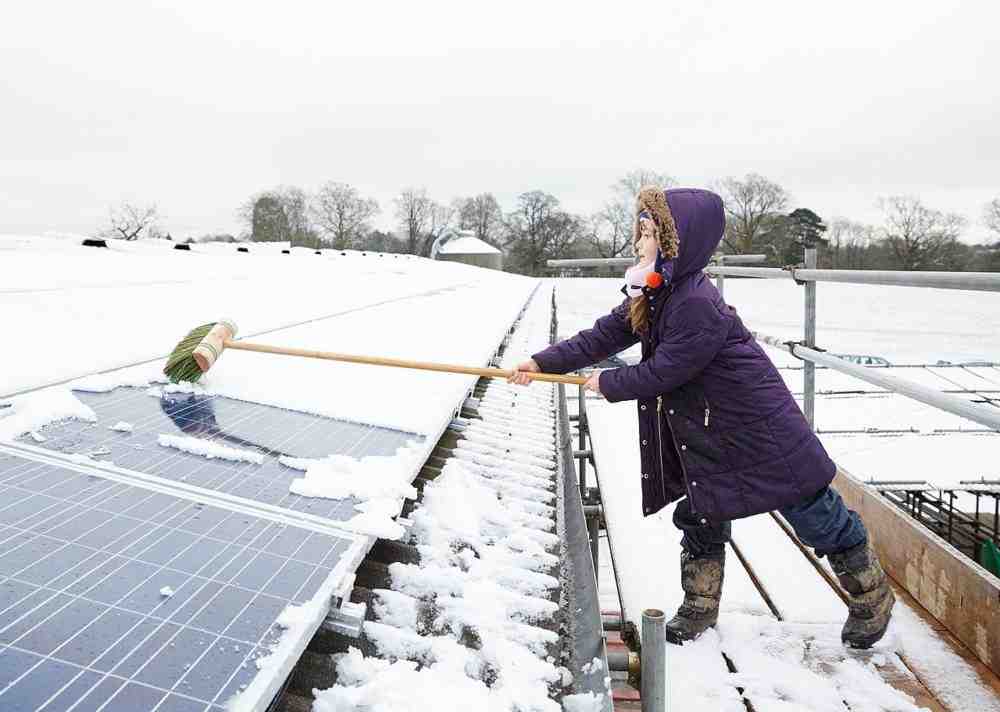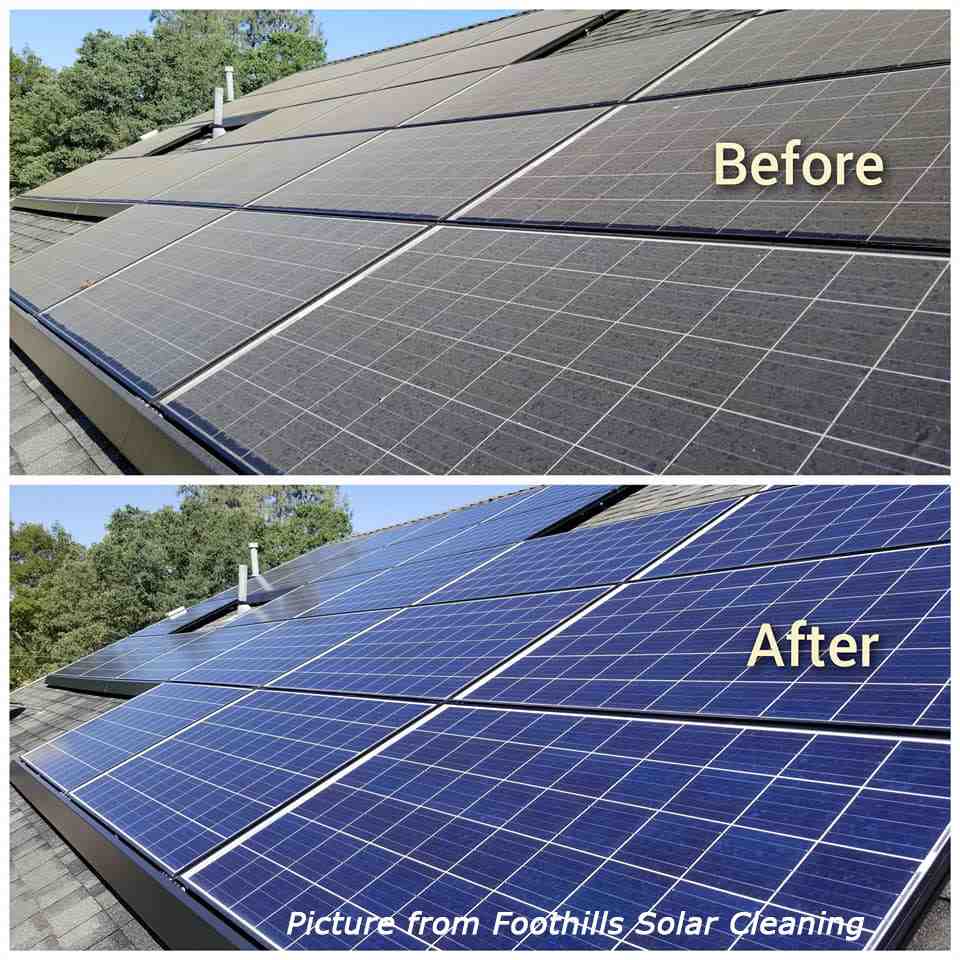Is solar energy clean or dirty?
Contents

Wind turbines, solar panels and geothermal power plants harness the natural elements and transform them into clean energy. They emit virtually no air pollution or climate change emissions.
Is solar energy a clean fuel? Clean energy is energy obtained from sources that release air pollutants, while green energy is energy derived from natural sources. … These renewable energy resources will not run out, unlike fossil fuels and gas, and include wind and solar power.
Are solar panels dirty energy?
Making solar panels is a dirty process from start to finish. Mining quartz for silicon causes silicosis, a lung disease, and the production of solar cells uses a lot of energy, water, and toxic chemicals.
Are solar panels considered clean energy?
Solar energy is energy from the sun that is converted into thermal or electrical energy. Solar power is the cleanest and most abundant renewable energy source available, and the United States has some of the richest solar resources in the world.
Is solar power dirty energy?
When most people hear the term “dirty electricity,” they are probably thinking of electricity produced from sources considered to be more polluting, such as coal, natural gas, or other fossil fuels. In fact, the company claims that solar power is one of the main sources of dirty electricity. …
Why is solar energy a clean energy source?

Solar energy is a renewable, sustainable and completely inexhaustible source of energy, unlike fossil fuels which are limited. … It is considered a source of energy that respects the environment because it comes directly from the Sun; it does not involve the combustion of fossil fuels.
Why is solar energy a clean source? Solar energy systems do not produce air pollutants or greenhouse gases, and as long as they are placed responsibly, most solar panels have little impact on the environment beyond the process. Manufacturing.
Is solar power a clean resource?
Solar energy – the energy of the sun – is a vast, inexhaustible and clean resource. Solar power generation represents a clean alternative to electricity from fossil fuels, without air and water pollution, without pollution from global warming, without the risk of soaring electricity prices and without threat to our public health.
Are solar panels 100% clean?
It is not very respectful to say that solar energy is bad, at least not compared to other types of energy powered by fossil fuels. Nevertheless, it has drawbacks which deserve to be analyzed. We can start by clarifying that solar energy is not zero emissions, clean or 100% green.
How clean is solar energy?

Electricity produced from solar produces no emissions, no greenhouse gases, and no fossil fuels, but it does require a certain amount of energy to make the solar panels. Fortunately, the energy they produce far exceeds what it takes to make them.
Is solar 100% clean? It is not very respectful to say that solar energy is bad, at least not compared to other types of energy powered by fossil fuels. Nevertheless, it has drawbacks which deserve to be analyzed. We can start by clarifying that solar energy is not zero emissions, clean or 100% green.
How dirty is solar energy?
Solar panels are made up of photovoltaic (PV) cells that convert sunlight into electricity. When these panels enter landfills, valuable resources are wasted. And because solar panels contain toxic materials like lead that can escape when they decompose, landfilling creates new environmental risks as well.
Is solar energy bad for humans?
Some solar photovoltaic technologies contain heavy metals which are considered toxic to humans if ingested in high doses or during prolonged exposure. The heavy metals most commonly used in a certain type of photovoltaic technology, called “thin film” technology, include cadmium, indium, gallium, and selenium.
Why is solar energy not sustainable?

While the sun is an inherently sustainable source of energy, some of the materials needed to make solar panels are not sustainable. Solar panels are built with rare minerals, like selenium, which will eventually run out if solar panel makers continue to mine them at an accelerated rate.
Why is solar energy bad for the environment? Solar panels are made up of photovoltaic (PV) cells that convert sunlight into electricity. When these panels enter landfills, valuable resources are wasted. And because solar panels contain toxic materials like lead that can escape when they decompose, landfilling creates new environmental risks as well.
What are the negatives of solar energy?
What are the disadvantages of solar energy (and for the environment)?
- Location and availability of sunlight.
- Solar panels use a large amount of space.
- The Sun is not always present.
- Solar energy is inefficient.
- There is neglected pollution and environmental impact.
- Expensive energy storage.
- High initial cost.
How are solar panels not sustainable?
Although the sun is a sustainable source of energy, solar panels are currently made of finished materials that require extraction and extraction. … These resources must also be purified and transformed into materials used in solar cells, which requires energy, chemical processes and other resources such as water.
Is making solar panels sustainable?
In addition, studies confirm that the production of electricity by photovoltaic solar panels is more sustainable than electricity powered by fossil fuels. … Therefore, solar PV technologies are small and can be used all over the world with relatively low operation and maintenance costs.
Is solar power energy sustainable?
The most popular sustainable energy sources, including wind, solar and hydroelectric power, are also renewable. Biofuel is a unique form of renewable energy because its consumption emits greenhouse gases that affect the climate and the cultivation of the original plant product uses other environmental resources.
Is solar technology improving?

Today’s solar industry is very different: In addition to the dramatic increase in the efficiency of solar panels, solar panel producers have dramatically improved their manufacturing processes. Solar installers can also deploy solar PV power across the United States more efficiently today than they could ten years ago.
How has solar technology improved over time? Due to the many advances in photovoltaic technology in recent years, the average conversion efficiency of panels has increased from 15% to over 20%. This great leap in efficiency resulted in an increase in the rated power of a standard size panel from 250 W to 370 W.
Is solar technology widely accepted today?
Is this technology widely accepted today? Solar power is not widely accepted in the United States or major countries because it is so expensive. It is also important to build them as close to the equator as possible because the sun’s rays are more concentrated.
What is the current status of solar energy?
Electricity production from solar photovoltaic in 2020 is estimated to have increased to a record 156 TWh, marking a growth of 23% compared to 2019. Solar photovoltaic represented 3.1% of global production of electricity, and it remains the third largest renewable electricity technology behind hydropower and onshore. wind turbine after overtaking bioenergy in 2019.
Why is solar energy technology not widely used?
Solar panels use an expensive semiconductor material to generate electricity directly from sunlight. Semiconductor factories need “clean” manufacturing environments and are expensive to build and maintain. The efficiency of solar cells is only about 22%. The rest of the sunlight that hits the panel is wasted as heat.
Is solar energy technology improving?
Solar Slide Larger factories, the use of automation and more efficient production methods have resulted in economies of scale, lower labor costs and less material waste for the solar sector. The average cost of a solar panel fell 90% from 2010 to 2020.
Is solar energy increasing or decreasing?
Solar generation (including distributed), which accounted for 3.3% of total U.S. generation in 2020, is the fastest growing source of electricity. Globally, renewables accounted for 29% of electricity production in 2020, largely from hydropower (16.8%).
Does solar energy have a future?
The United States can provide 40% of the country’s electricity supply by 2035 and 45% by 2050 with solar power, according to a new study from the US Department of Energy.
Why is solar energy the cleanest form of energy?
We experience this incredible source of clean energy through sunlight and heat, and we can use this energy to create electricity through technologies such as solar panels or concentrating solar power plants (reflective mirrors). ). We produce this electricity without any emissions or pollution, so it is checked.
Is solar energy the cleanest? Solar energy is energy from the sun that is converted into thermal or electrical energy. Solar power is the cleanest and most abundant renewable energy source available, and the United States has some of the richest solar resources in the world.